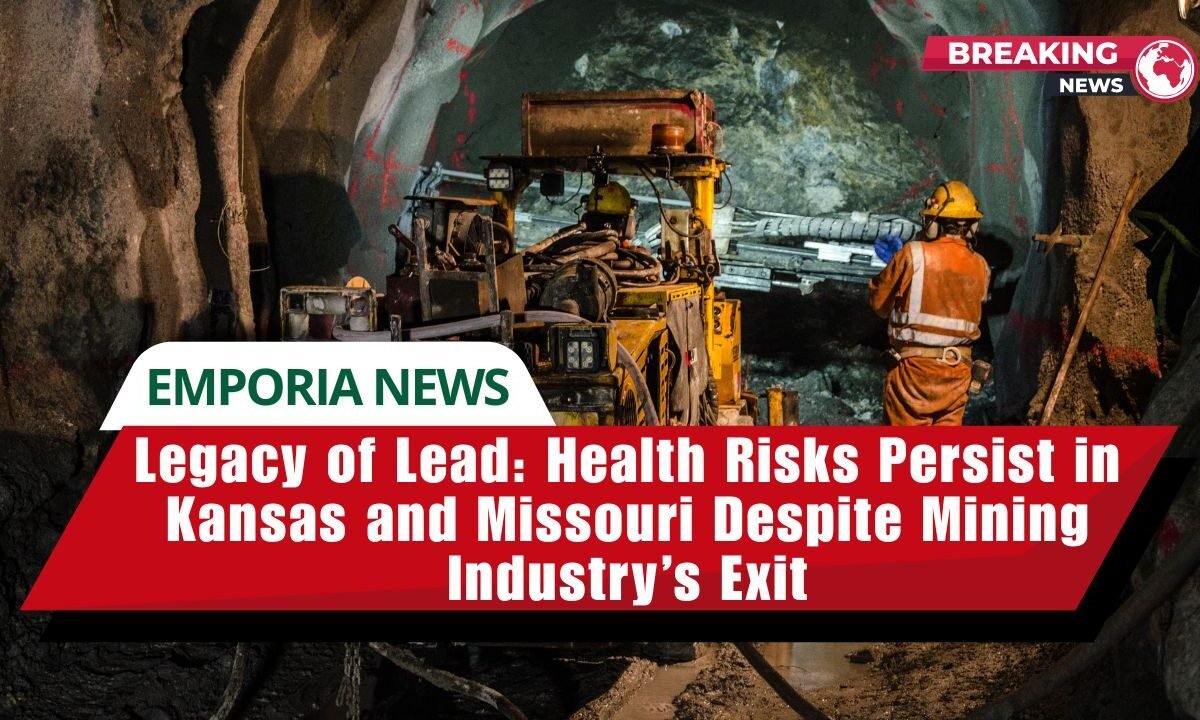Although the lead and zinc mines that once drove the economy of southeast Kansas, southwest Missouri, and northeast Oklahoma have long shut down, their hazardous remnants continue to pose serious health risks, especially to children.
Experts and community advocates warn that lead exposure remains a widespread but often under-addressed issue, particularly in high-risk rural areas.
A Family’s Discovery: Hidden Dangers in the Home
Johanna Schmid and her husband Steve Hench live in an old home in Weir, Kansas, with their five children, three of whom are under age three.
During a routine pediatric checkup in October, their three-year-old son tested for elevated blood lead levels, recording around 9 micrograms per deciliter—far above the CDC’s safety threshold of 3.5.
“It’s heartbreaking when you try your best to protect your kids and still miss invisible dangers,” said Schmid, who described feeling helpless and defeated.
With help from the Cherokee County Health Department and the Environmental Protection Agency (EPA), the family identified lead sources inside their 1930-built home, including old wallpaper, window frames, and contaminated soil in the yard—likely tied to residue from the former Tri-State mining operations.
The Lingering Impact of Lead Exposure on Children
Lead poisoning is especially harmful to young children, causing:
- Developmental and learning delays
- Behavioral problems
- Anemia and other blood disorders
Despite the risks, lead testing is not mandatory in Kansas, meaning families must rely on pediatricians or personal awareness to identify possible exposure.
Widespread Exposure: Kansas Above National Average
Between 2018 and 2020, data showed that 65% of tested Kansas children had detectable levels of lead, surpassing the national average of 51%.
Much of this contamination is linked to chat—a mining byproduct once used in construction fill, roadbeds, and housing foundations.
Peyton Kessler, an administrator at the Cherokee County Health Department, emphasizes the importance of early lead testing, especially in children showing signs of anemia or developmental delays.
“If a child is struggling, start with what’s simple to test,” she explained.
Challenges in Addressing the Crisis
One of the biggest hurdles in tackling lead exposure is the lack of funding for remediation efforts. While public health departments attempt to educate families, there are limited resources to remove or reduce lead from older homes and soil.
“Each state receives limited federal funding—and it’s shrinking,” said Kessler.
Families like Schmid’s were able to act because of proactive doctors, but many households lack access to information or support.
Community Organizations Step Up
To fill the gap, groups like the Healthy Bourbon County Action Team (HBCAT) are working to raise awareness. In partnership with health officials and academics, they developed a community toolkit that explains:
- Lead exposure pathways
- Health effects
- Remediation strategies
Christina Pacheco, assistant professor at the University of Kansas Medical Center, helped design the toolkit. She describes it as a practical, community-centered guide for residents and policy advocates.
“We hope this toolkit influences the people who can make meaningful changes—especially lawmakers,” Pacheco said.
While the resource is still pending approval, it could launch as early as fall 2025.
Though the lead mining industry in Kansas and Missouri shut down decades ago, the health threats it left behind remain a serious concern.
Families like the Schmids are left managing the consequences, often with limited guidance or funding.
As local organizations push for greater awareness and policy action, the need for accessible, proactive health resources becomes increasingly urgent. Lead contamination may be invisible—but its effects are dangerously real.




